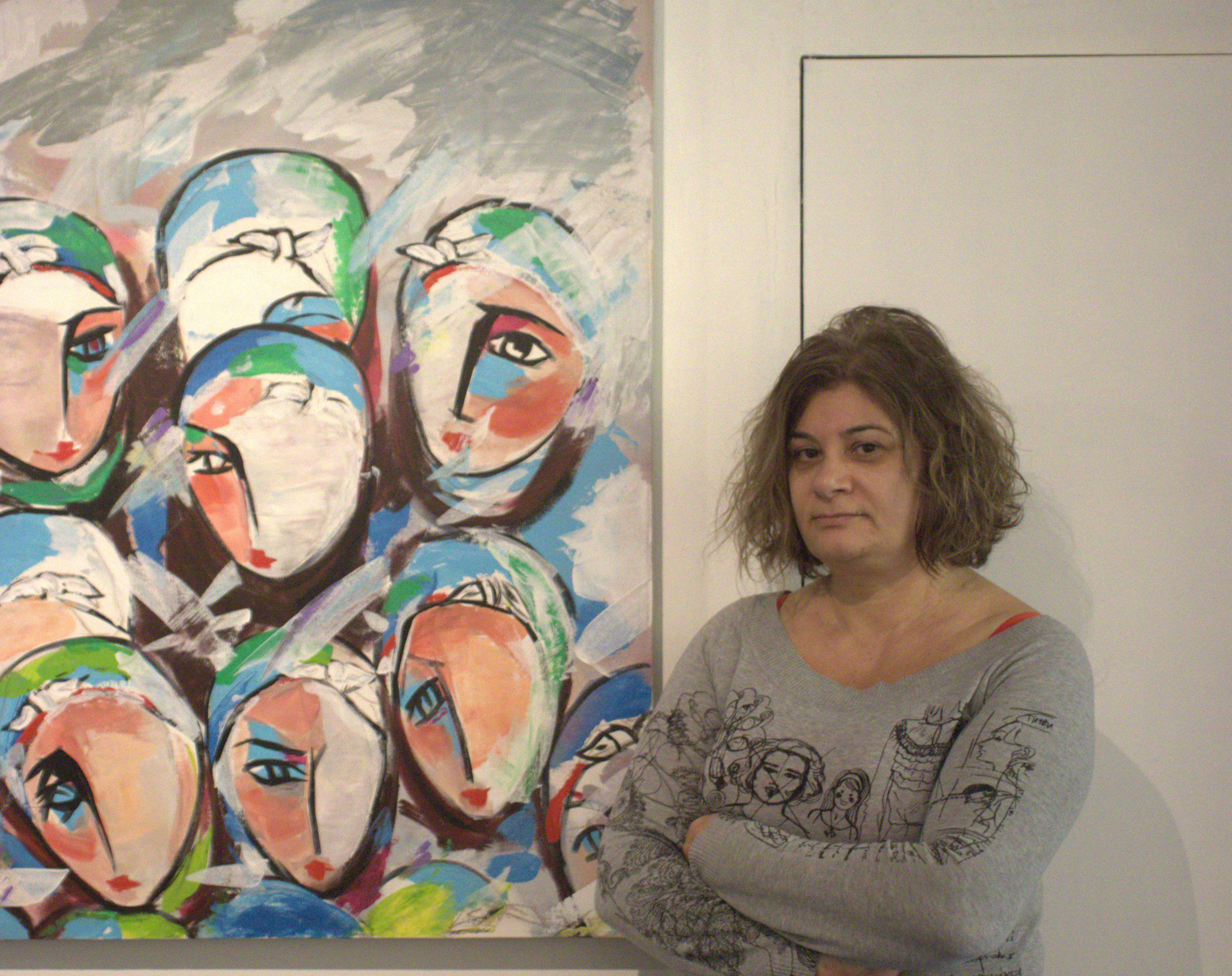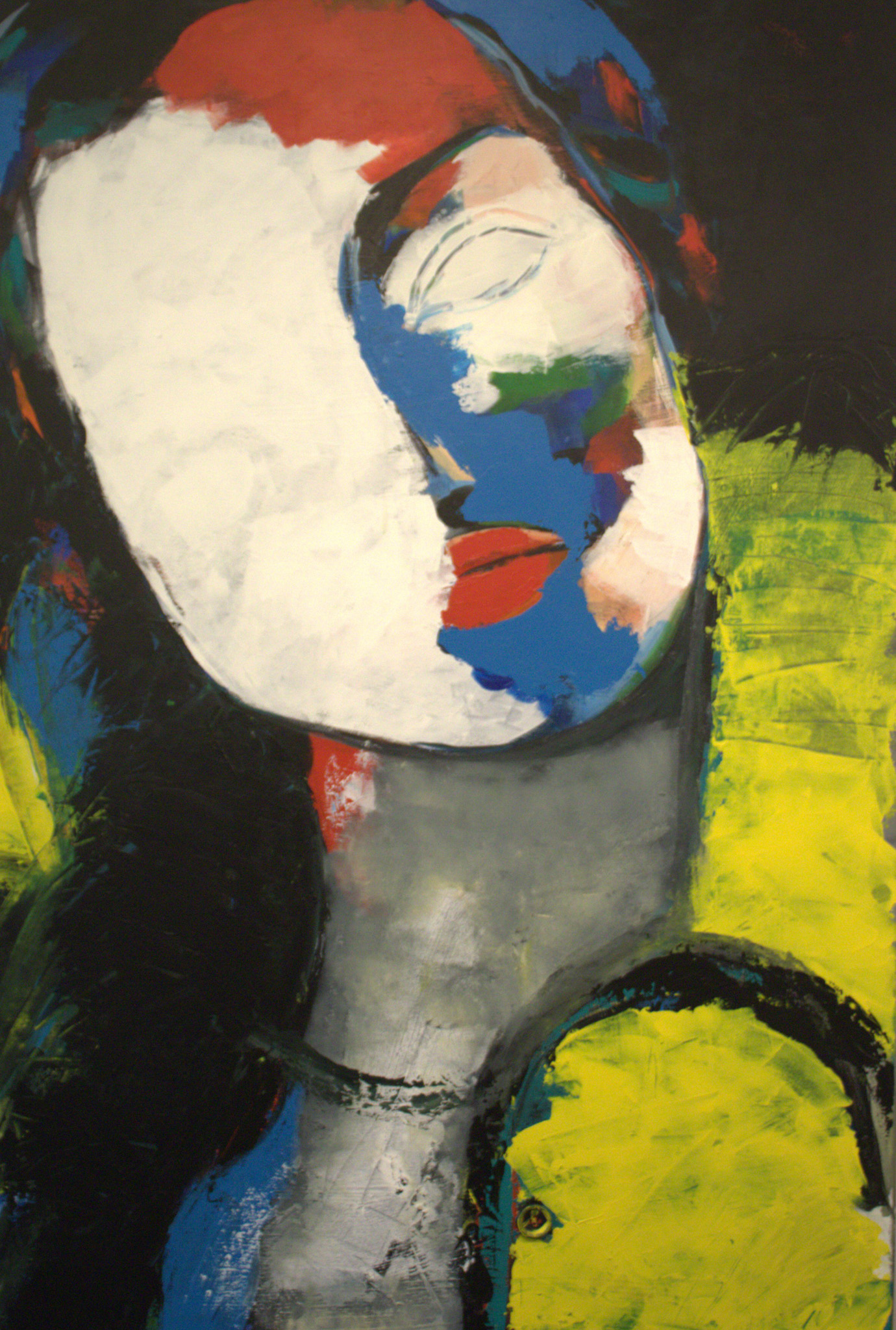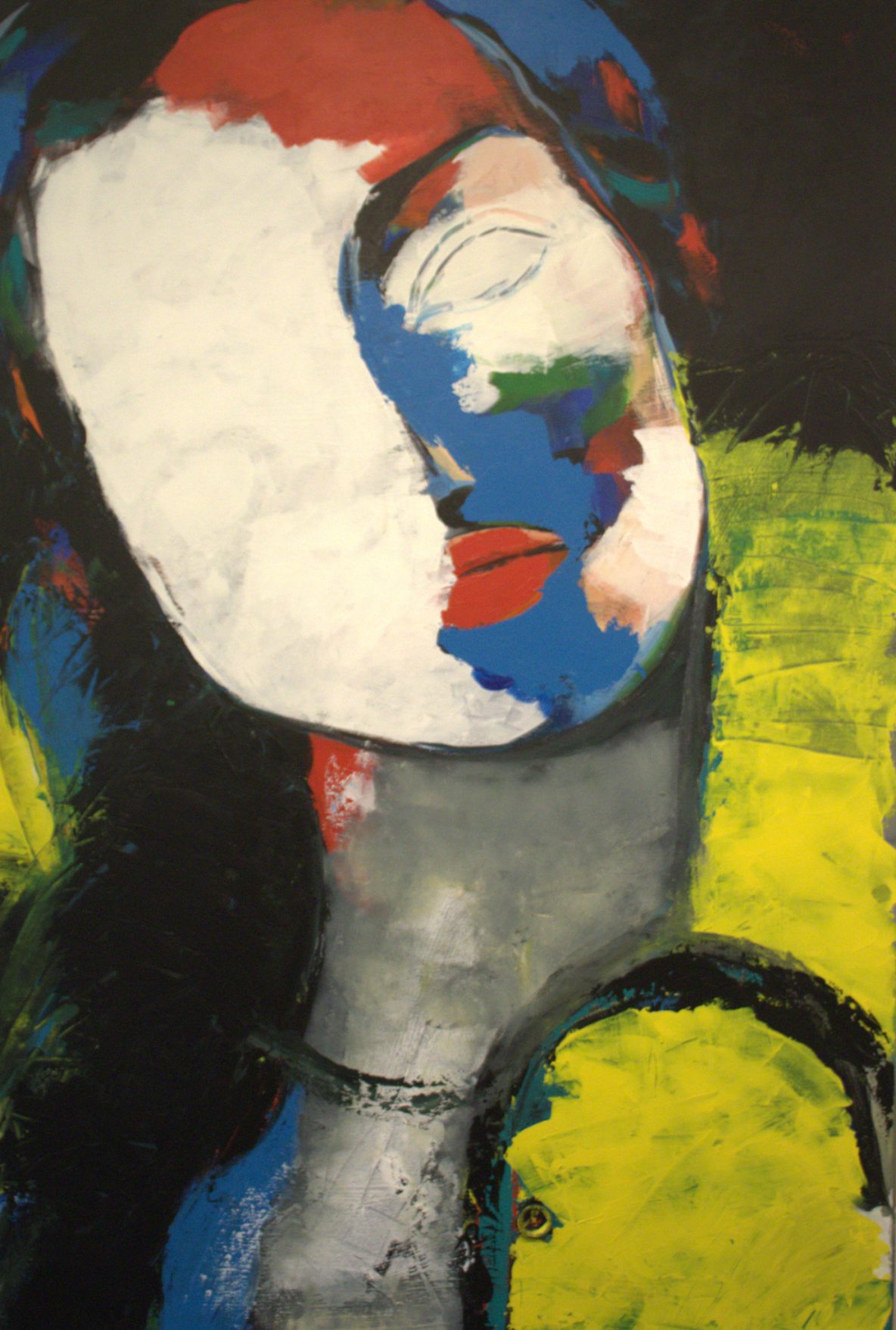“I see my paintings as a letter to people”, says Turkish artist Sevim Ünal (57). In her gallery, ‘ArtWorld’ in Antwerp, Belgium, there is a painting showing women’s faces split in two, one half left blank and the other detailed with bright colours. Growing up in Turkey, Sevim didn’t feel safe as a girl and was part of a non-Muslim religion. “I try to help people in trouble.”

“I come from a family with a different religion, Alevism. We believe in nature and not in a God who will burn us if we do something wrong. Nature is God itself; each person or animal is valuable. I grew up on an island where most people in the village were Alevi, but there was a small part that was Muslim. They thought, “This is our country, you have to live like us”. We felt it during Ramadan, we had to shut our curtains, stay inside, and live secretly. We were in the middle of something that didn’t like us.”
“The majority in Turkey is Muslim and when I say I am Alevi, they say “You are not Muslim, you are not one of us”. For centuries, they have been killing people with a different religion. When I was little, my family was afraid of the government, I remember conversations about them being scared to get killed. I grew up in these situations. My grandmother’s family was killed by fanatic Muslims because of their religion. After that, she and her brother left. I painted her and when you look at that painting, there is history and crime, it tells many things about our life then and now.”
“There are Muslim families who move because of fanatic Muslims, like the Daesh. They leave everything behind. People who had run away from Syria came to Turkey. I have a summerhouse on the coast, so I saw them trying to cross the sea and flee to Greece. Many of them died at sea, including young children. I tried to help them because they were sleeping on the ground with their children without anything to cover themselves. I went to many shops to buy blankets, but the shop owners asked me why I wanted to buy so many. When I told them why, the shop owners told me they had nothing for me and that these people should go back to their country.”
“I wrote a book about the Syrian war in 2014 where the Daesh killed Yezidi’s people. I couldn’t say, “This is not my case; I don’t care”. I met with people who ran away, and I stayed at their houses to interview them. Sometime after it was published, a man came to my house, he looked Daesh because of the traditional clothes. He rang our bell while I was upstairs. I opened the window and asked him how I could help. He told me he was selling the Kuran, but this couldn’t be true as Muslims don’t go from door to door selling things. He came to control me. He was a Daesh member and knew what I did. He asked me to come down so we could talk outside. I told him I wasn’t interested and would call the police if he didn’t go away.”
“I left Turkey with my brother when I was 24 years old. I was the first woman in Antwerp to have her own studio and make a living as an artist. My sisters still live in Turkey even though I left because of women’s rights. There, you are not comfortable walking outside because the men are disturbing you. They look at you like you’re an object and don’t have any personality. You are not somebody but something. That’s how I felt when I lived there. This is where the half faces come from. One half is painted in bright colours, and the other half is white, which stands for the woman herself, how she likes to live, and what she likes to do. We cannot see that part because society doesn’t give women the chance to live the way they want to live. I try to help us find a way in this society. I made a sculpture of an Armenian girl who was raped and killed in 1915, she was fourteen years old. It still happens everywhere. People have left their humanity.”

“While these things happen, I cannot paint happy things; that doesn’t match with me. These are sad topics, so I don’t use dark colours; I paint in bright colours to make people look at my paintings. I find ways to catch people’s attention and inform them about what is happening in the world. I shake people, “If you don’t do anything, you are not safe.”
[jetpack-related-posts]
